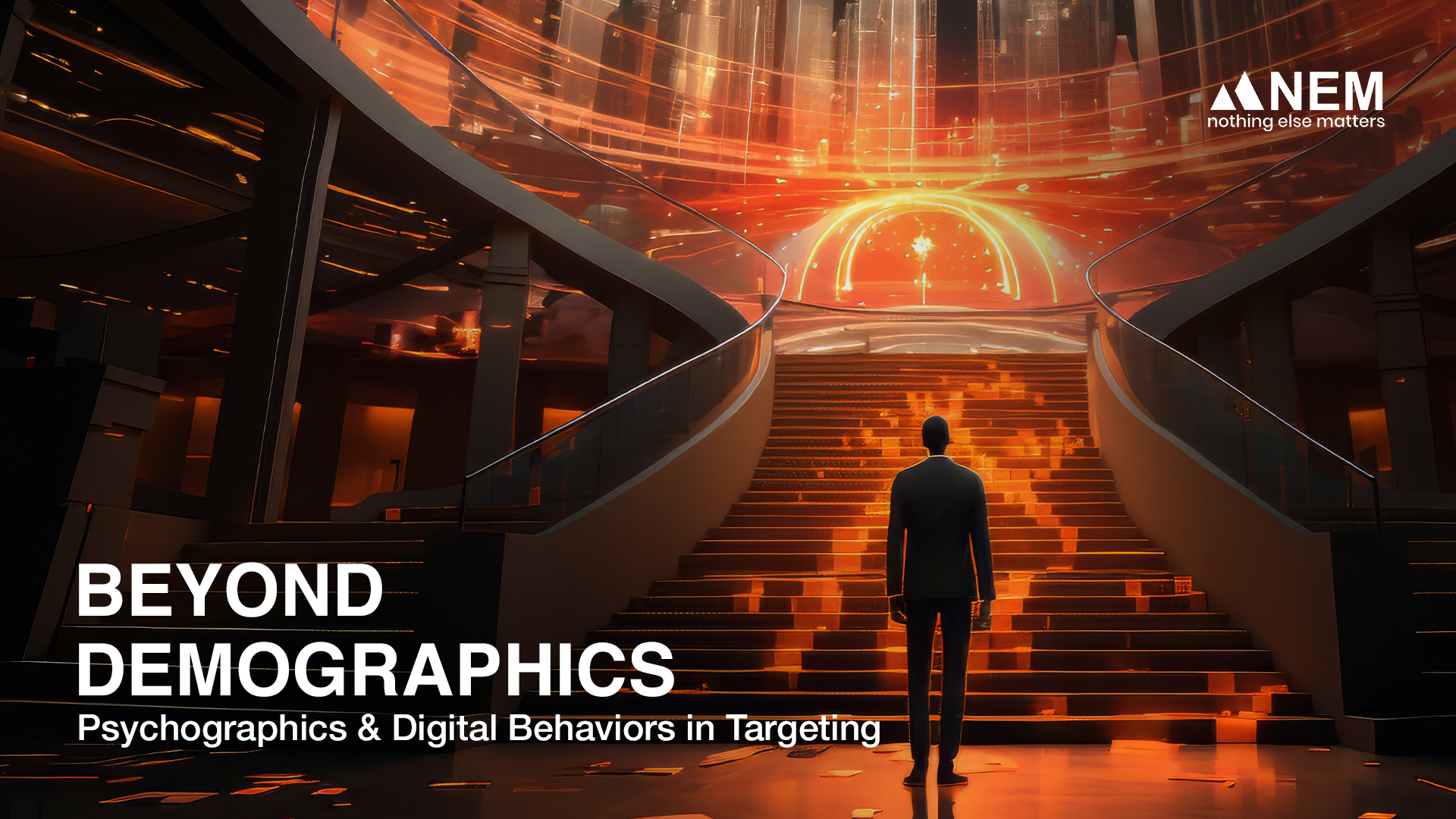Beyond Demographics: How Psychographics and Digital Behaviors Are Shaping the Future of Targeting

Introduction: The Shift Beyond Demographics
For decades, marketing strategies have leaned heavily on demographics—age, gender, income, location, and occupation. These metrics offered brands a structured way to segment audiences and design campaigns. But in the age of personalization and predictive intelligence, demographics are no longer enough. Today’s consumers are multifaceted, dynamic, and driven more by their values, beliefs, attitudes, and digital behavior than by their age or income alone.
Enter psychographics and digital behaviors—the new holy grail of targeting. Together, they unlock a richer, more precise understanding of consumers, offering marketers an edge in an ultra-competitive landscape.
Understanding Psychographics: Beyond the Basics
- Lifestyle (How they spend their time and money)
- Values and Beliefs (What matters most to them)
- Personality Traits (Introversion, openness, conscientiousness, etc.)
- Motivations and Aspirations (Why they buy, what goals they aim for)
Unlike demographics, which tell you who your customer is, psychographics reveal why they behave a certain way.
Brands that leverage psychographic insights can tap into the emotional and cognitive dimensions of decision-making, resulting in messaging that feels personal and deeply resonant.
The Power of Digital Behaviors
Digital behavior refers to how consumers interact with digital platforms: what they click, how long they dwell, what content they share, and how they engage across devices and times of day.
These data points provide actionable insights such as:
- Intent Signals (Search queries, product views, cart additions)
- Content Preferences (What blog topics, videos, or formats they favor)
- Purchase Behavior (Timing, frequency, and triggers)
- Engagement Patterns (Best time to post, most engaging content types)
By mapping these behaviors, marketers can create dynamic customer journeys, anticipate needs, and tailor experiences in real time.
Why This Combination Matters Now
1. Cookie Deprecation & Data Privacy Evolution
With third-party cookies on their way out, brands need to rely on first-party and zero-party data. Psychographics and digital behavior data, collected ethically and transparently, are becoming central to personalized marketing.
2. Hyper-Personalization is the Expectation
Consumers expect brands to “get them.” A generic message won’t cut it. Psychographic profiles help brands deliver personalized content that speaks directly to individual motivations and values.
3. Better ROI through Precision
Psychographic and behavioral data allow for smarter segmentation, leading to more efficient ad spends, higher conversion rates, and improved customer lifetime value.
Case Study Examples
1. Spotify Wrapped: Personalization Done Right
Spotify doesn’t just give users playlists. It analyzes listening behavior and psychographics (mood, genre preference, energy level) to create hyper-personalized music summaries. This drives loyalty and viral sharing.
2. Nike Training Club: Values in Action
Nike aligns itself with aspirational psychographics—self-improvement, resilience, progress. Its app, NTC, tracks behavior while embedding motivational content that taps into these values, creating a purpose-driven experience.
3. Headspace: Behavior-Based Journeys
Headspace uses behavioral data (session frequency, time of use) to deliver custom meditation journeys. Combined with psychographic understanding (e.g., stress reduction, sleep improvement), they create highly sticky routines.
How to Get Started with Psychographic + Behavioral Targeting
1. Collect the Right Data
- Surveys & quizzes for self-reported psychographics (zero-party data)
- Website/app analytics for behavior mapping (first-party data)
- CRM data enriched with psychographic tools (e.g., Crystal Knows, IBM Watson Personality Insights)
2. Build Segments Based on Personas
Combine both types of data to build nuanced personas. For example:
- “The Conscious Shopper”: Values sustainability, reads long-form content, shares cause-driven campaigns
- “The Hustler”: Engages with productivity tools late at night, responds to motivation-based messaging
3. Personalize Messaging and Content
Align ad copy, visuals, CTAs, and even UI flows with different psychographic and behavioral segments. Emotional resonance becomes the goal.
4. Test and Iterate
A/B test different psychological angles (fear vs. aspiration, community vs. independence) and behavioral triggers (time-based, frequency-based) to optimize performance.
Tools & Platforms That Enable This Shift
- CDPs (Customer Data Platforms) like Segment and Bloomreach
- Behavioral Analytics with tools like Mixpanel, Hotjar, Heap
- Psychographic Profiling through platforms like Nudge.ai, Helixa, or social media listening tools
- AI and ML Algorithms for predictive segmentation and content personalization
The Ethical Angle
With great data comes great responsibility. Transparency, consent, and ethical usage must guide all psychographic and behavioral marketing efforts. Consumers are more aware than ever; trust is now currency.
Conclusion: A Smarter, Deeper, More Human Approach
Marketing is no longer about reaching the most people—it’s about reaching the right people with the right message at the right moment. Psychographics and digital behaviors allow us to go beyond the surface and connect at a human level.
As the lines between digital life and real life blur, understanding the “why” and “how” behind user actions isn’t just smart marketing—it’s the only marketing that will matter.
Now is the time to move beyond demographics and start marketing to mindsets, moments, and motivations. That’s the new holy grail.
